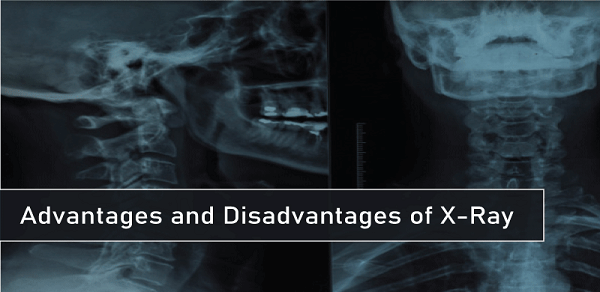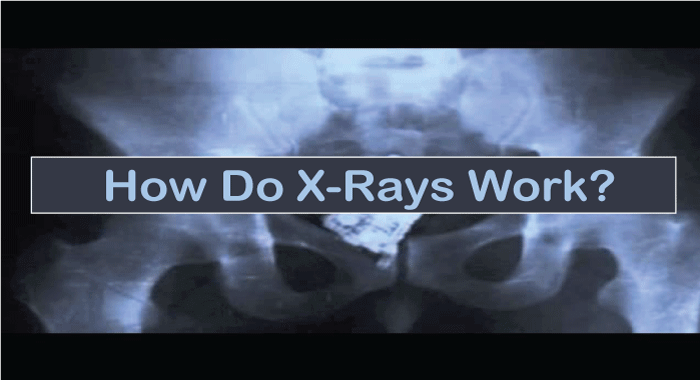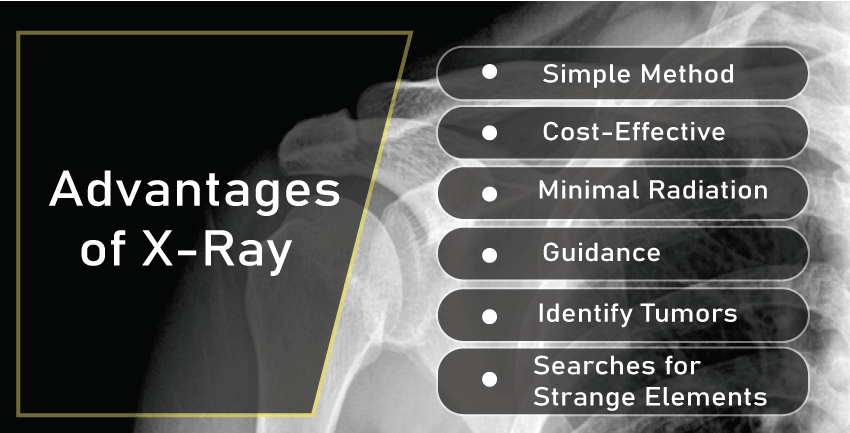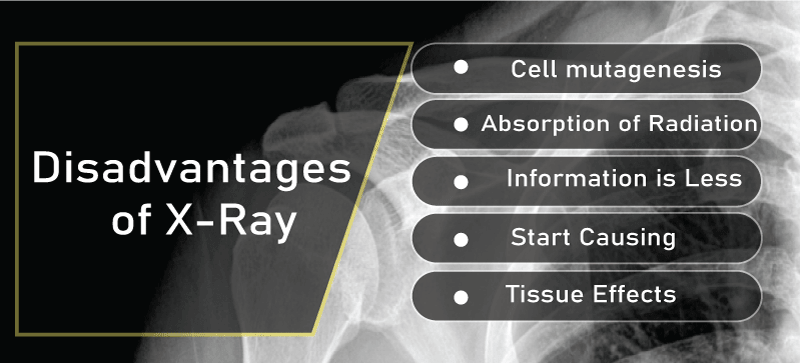Advantages and Disadvantages of X-rayIn 1895, German physicist Wilhelm Conrad Roentgen realized the existence of X-rays. It was a discovery made accidentally. When he discovered x-rays flowing through objects, he was testing cathode rays. He quickly learned that these rays might also enter human flesh and provide photographs of the inside organs. 
Cutting the bodily part was the sole method for diagnosing issues at the time. We've successfully developed a method of viewing the inside of the body without requiring an incision due to the invention of X-Rays. It has been one of history's most remarkable achievements. X-ray technology allows us to diagnose cancer, fractured bones, and other issues. Let's examine its advantages and disadvantages in full in this discussion. How Do X-Rays Work?
X-rays are a kind of electromagnetic energy that may pass through the body and most other substances. In medicine, it is utilized to create pictures of the interior bone and tissue systems. Depending on their density, the tissues and bones absorb an X-ray beam differently as it travels through the body. It creates a shadow captured in a film studio on the X-ray machine's other side. Computerized tomography (CT), radiography, and fluoroscopy are X-ray imaging methods to discover medical disorders. Although X-ray scanning is frequently used to aid in early illness treatment, the test is not without danger. Advantages of X-ray
The ability to examine the inside of the body without needing surgery is the most evident benefit of utilizing X-Rays. When it was first discovered, physicians utilized it to check for internal gunshot wounds and bone fractures. The following are some significant advantages of X-Ray usage. 1. Simple method The X-Ray method is very rapid and easy. It is employed in cases of emergency as a response. It aids medical practitioners in determining the root of the issue. In an emergency, individuals might be unable to communicate their medical concerns; thus, taking an X-ray is a good first step in treating them. The target region of the body is revealed during this technique to get radiographic pictures. The doctor initially informs the patient that some precautions must be followed. 2. Cost-Effective We have made X-Rays cost-effective since we have used them for a long time. Radiographic pictures have allowed us to avoid expensive surgical treatments since they allow us to examine the bone structure and muscles of the body. Also, early detection of health issues is simple, significantly lowering the cost of treatments. Moreover, hospitals and other medical service centers can perform X-rays. It means that these tests are reasonably priced and easily accessible. 3. Minimal Radiation Radiation exposure changes according to the types of X-Rays. Compared to other radiation sources, X-rays expose you to very little radiation. Also, the low radiation looks reasonable compared to the advantages of X-rays. X-rays provide the knowledge that helps people live longer. Low radiation exposure is ideally thought to have no instant health effects. 4. Guidance During operations, surgeons implant catheters, stents, or other devices within the patient. X-ray radiograph is used during these treatments to help the doctor treat blood clots, tumors, and other similar obstructions. 5. Identify Tumors The X-ray process is typically painless, making it a great choice for tumor diagnosis. A tumor is only an unwanted tissue mass that occasionally develops into cancer. X-rays may be used to see what is happening within the body and determine if it is dangerous. It raises the chance of a successful result. Early illness detection allows for relatively effective disease management. Thus, decreasing the patient's suffering and preserving the family's money on costly therapies. 6. Searches for Strange Elements X-rays also help identify tumors, malignancies, and strange elements in the body. Non-resident items are discovered in the body but do not belong there, according to technical terms. These items, which originate from the outside surroundings, may enter the body intentionally or accidentally. Surgery or ingestion are two instances that may introduce things that are different. It may also enter the body accidentally through damage. These foreign items are found via X-rays and removed as soon as possible since they can do considerable harm if left within the body. Disadvantages of X-ray
Despite the enormous advantages that X-ray technology offers, there are also drawbacks. These are a few drawbacks of X-ray use. 1. Cell Mutagenesis We mentioned how X-rays introduce you to less radiation in the benefits section. Hence, the negative consequences are under control. The claim, however, is no longer in effect when X-ray frequency increases. If X-rays are exposed to greater radiation exposure, cancer may result. It means that it can alter the cells' DNA. The lack of control over cell division that follows has the impact of causing cancer. 2. Absorption of Radiation Various body areas absorb radiation to various degrees during the X-ray technique. In radiographic pictures, thick bone looks white because it absorbs more radiation. However, the soft tissues appear gray because they absorb less radiation. The air is all that is visible as black in the photograph. In worst-case situations, bone calcium causes fractures and growth inhibition because it absorbs more radiation. Bone collects radiation very well because it includes elements with higher atomic numbers. In comparison, the soft tissues can absorb less radiation and allow it to pass through. More radiation absorption by the bone has the additional drawback of hiding diagnostic information. Preventing access to information that may be important in treatment options could make X-rays ineffective. 3. Information is Less Comparatively speaking, X-ray scans reveal less information than other imaging examinations. In some studies, using numerous radiographic pictures may also be necessary. It indicates that the treatment is raised for each photograph, leading to significant exposure to radiation. Medical experts are compelled to look for other options; as a result to lessen exposure and, at the same time, obtain more understanding to begin the therapy. 4. Start causing Ionizing radiation, produced by X-rays and can injure internal organ tissues, is also present. X-rays have been linked to DNA abnormalities that can lead to cancer in later life, according to the World Health Organization (WHO) and the US government. 5. Tissue Effects X-rays can be utilized in tiny doses to diagnose mental conditions. The living tissue, however, may be harmed when the dose's frequency rises over time. Vomiting and bleeding are caused by high radiation exposure. In actuality, the radiation affects biological tissues and kills cells. Skin and hair loss, as well as frequent fainting, are the effects of this. Due to this, precautions are made to prevent radiation exposure during the tests, such as protecting exposed body areas. ConclusionWhen utilized properly, X-rays provide many more advantages than disadvantages. However, the radiation levels created by X-rays are smaller and have no direct negative effects on health. X-ray imaging is significantly more advantageous when the proper diagnosis is made, and the appropriate course of action is selected, but it's also vital to consider the disadvantages. |
 For Videos Join Our Youtube Channel: Join Now
For Videos Join Our Youtube Channel: Join Now
Feedback
- Send your Feedback to [email protected]
Help Others, Please Share









